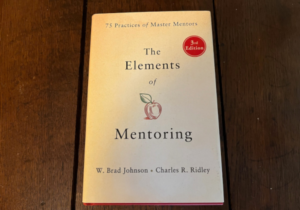Sharpen Your Research Skills, Boost Your Career with a Mini-sabbatical
Dr. Courtney Peterson, assistant professor in the Department of Nutrition Sciences at University of Alabama at Birmingham (UAB), is having a very good year.
Her pioneering work on early time-restricted feeding (eTRF) in humans, shown to improve health even in the absence of weight loss, appeared in the highly ranked academic journal Cell Metabolism, making waves in the New York Times, the Washington Post, NBC News, and other media outlets. It also caught the attention of a public looking for effective, sustainable weight loss solutions, spawning a hashtag on Twitter (#eTRF) followed by a growing number of fans.
Additional validation arrived in July 2018, when Peterson received a large ($2.2 million in direct costs) NIH R01 grant to pursue the next phase of her eTRF research. The funding will allow her to establish a new lab at UAB, where she is launching a large-scale clinical trial to study the effect of eTRF and time-restricted feeding later in the day (ITRF) on blood sugar, blood pressure, and cardiovascular risk factors in adults with prediabetes.
As measured by any academic standard, Peterson, whose PhD is in Physics, is incredibly successful for someone who is considered an “early stage investigator” by NIH definition. So, we had to ask, of her many scholarships and fellowships and master’s degrees, was there any particular learning opportunity that provided a special boost to her career?
Her answer, in a nutshell: The Center for Clinical and Translational Science (CCTS) mini-sabbatical.
What is a Mini-sabbatical?
Mini-sabbaticals are immersive training experiences that connect investigators from any career stage with experts outside of their institution to supplement their research repertoire, from mastering a new tool or technique to acquiring new data or knowledge. An advantage of the CCTS program is its intense focus; unlike apprenticeships of yore, or a traditional academic sabbatical, mini-sabbaticals last only 2-120 days.
While an NIH KL2 career development scholar at the Pennington Biomedical Research Center in Louisiana, Peterson applied to the CCTS mini-sabbatical program so she could spend 10 weeks training with one of the world’s leading clinical researchers in circadian rhythms, sleep, and meal timing, Dr. Frank Scheer, who holds joint appointments at Brigham and Women’s Hospital and Harvard Medical School.
“The mini-sabbatical experience changed my career, providing me with the translational research skills, domain knowledge, and mentoring I needed to become the first investigator to study the health effects of intermittent fasting in relation to circadian biology in humans,” Peterson said.
“Most training programs are too short to really become an expert in an area and to become a truly multidisciplinary researcher,” Peterson added. “The mini-sabbatical was critical in providing me with an immersion in circadian research, so that I can help bridge the gap between the two fields of intermittent fasting and circadian biology and better understand the impact of meal timing on human health.”
Although the CCTS mini-sabbatical supports travel to another institution, the experience often results in investigators learning to look in their own “academic backyards” for new collaborative learning relationships. After Peterson returned from Boston, she sought out Dr. Karen Gamble at the UAB Nutrition and Obesity Research Center to learn about molecular and animal model techniques for studying circadian rhythms, rounding out her research skill set.
Beyond Anecdotes: Measuring Mini-sabbatical Effectiveness
SEQUIN, which stands for multi-CTSA mini-Sabbatical Evaluation and QUality ImprovemeNt, aims to evaluate and expand the use of mini-sabbaticals. It is a joint project of four CTSA Hubs: UAB, the University of Massachusetts Medical School, New York University School of Medicine, and the University of Rochester Medical Center (in its capacity as the Clinical and Translational Science Awards (CTSA) program coordinating center).
“Mini-sabbaticals offer a tailored training experience to meet the unique needs of an individual investigator,” says CCTS Director Dr. Robert P. Kimberly. “As the paradigm shifts toward team science in academic medicine, mini-sabbaticals offer a pathway toward greater scientific synergy among institutions with shared research goals.”
How Do I Find a Mini-sabbatical Opportunity?
The Center for Leading Innovation & Collaboration (CLIC) recently launched a mini-sabbatical opportunities web page to help promote the CCTS mini-sabbatical program. Translational investigators looking for an immersive experience to grow their research skills and knowledge should start there.
As of this posting, there are 33 mini-sabbaticals available, representing a broad array of biomedical and behavioral disciplines (e.g., informatics, genetics, genomics, imaging; public health, economics, health policy) and complementary fields (e.g., drug and device development, pharmacotherapy, bioethics, and biomedical innovation/ commercialization). Opportunities for learning to work with special populations (defined not only by race, but also age and geographic location) are also available.
CCTS offers $1000 in support to investigators in our Partner Network who apply for a mini-sabbatical and encourages investigators to propose a mini-sabbatical if they do not see one that meets their career development needs. To learn more about the requirements for applying to the CCTS mini-sabbatical program, visit http://www.uab.edu/ccts/training-academy/trainings/mini-sabbaticals.
Questions? Email CCTS (ccts@uab.edu).






0 Comments